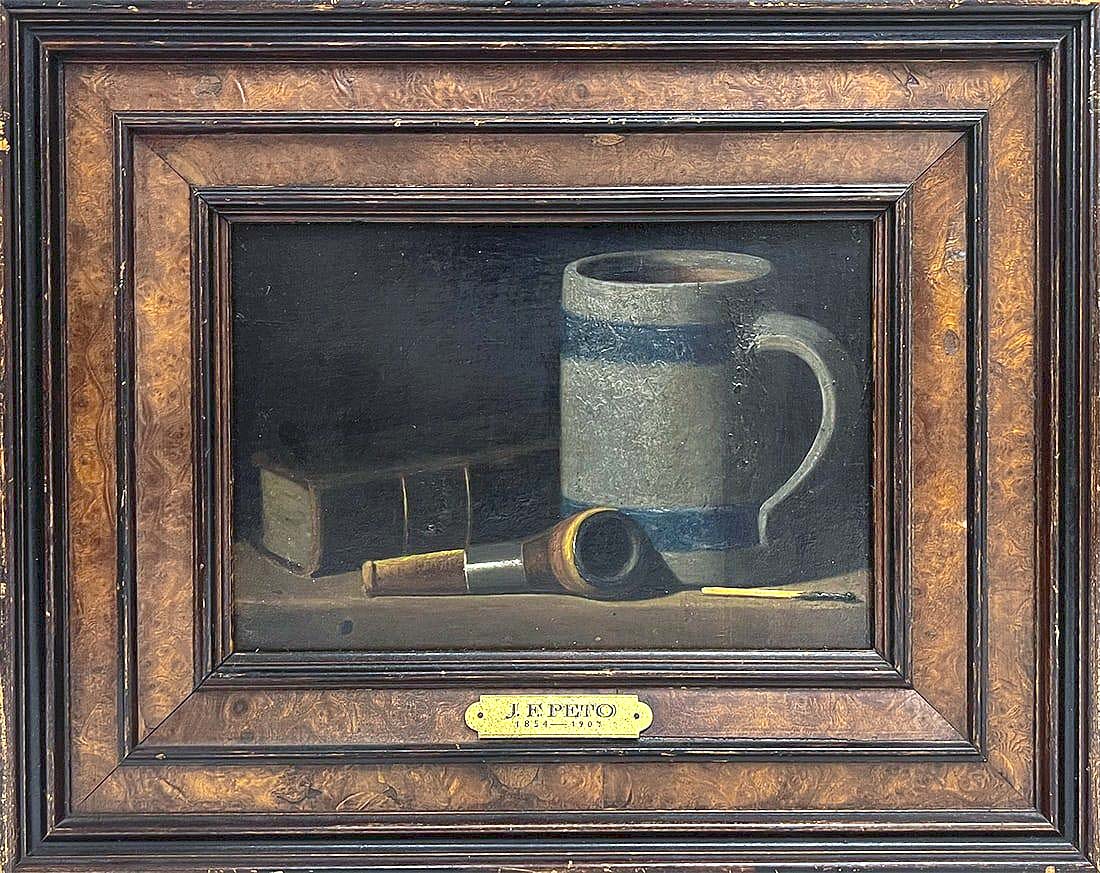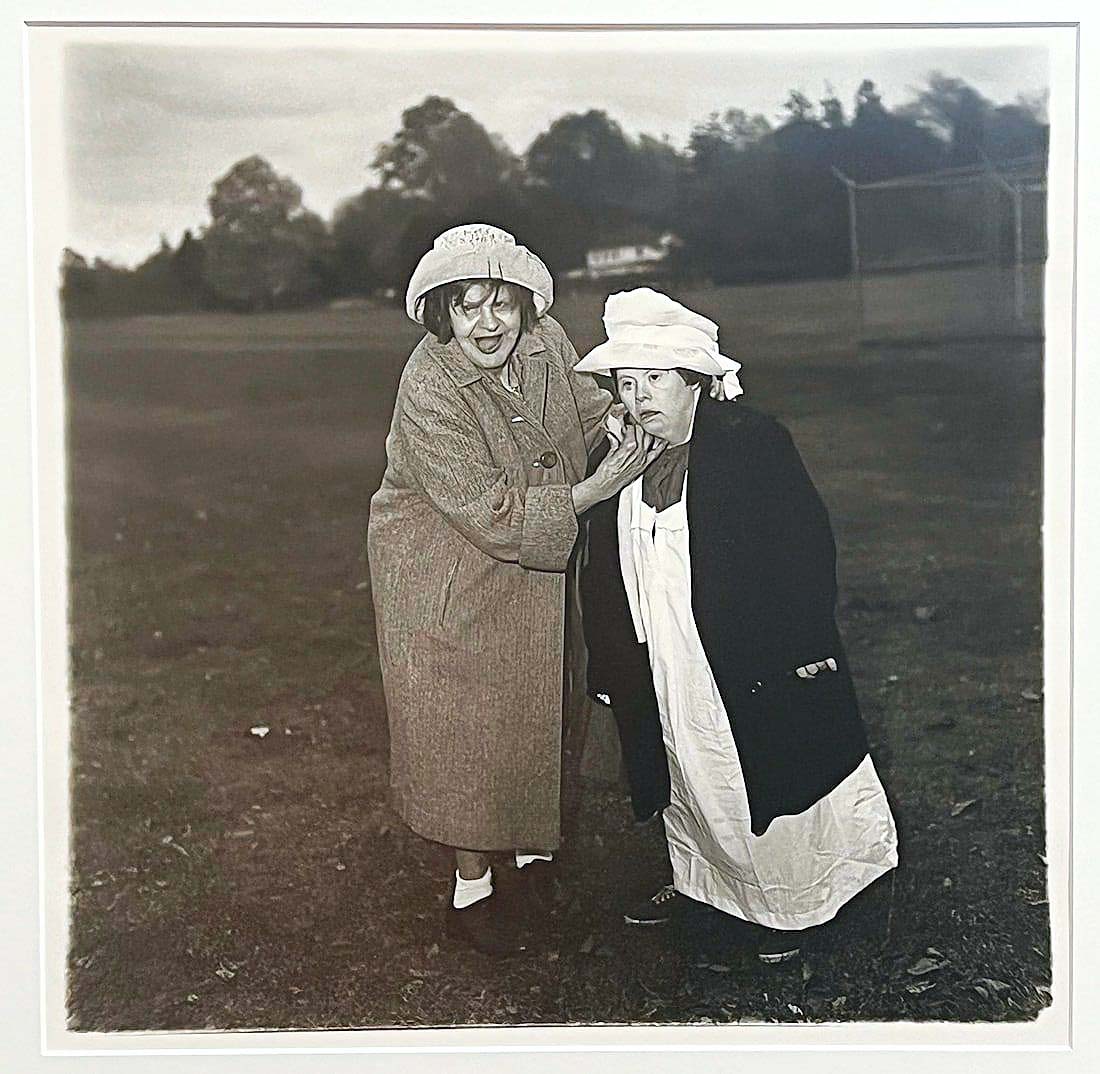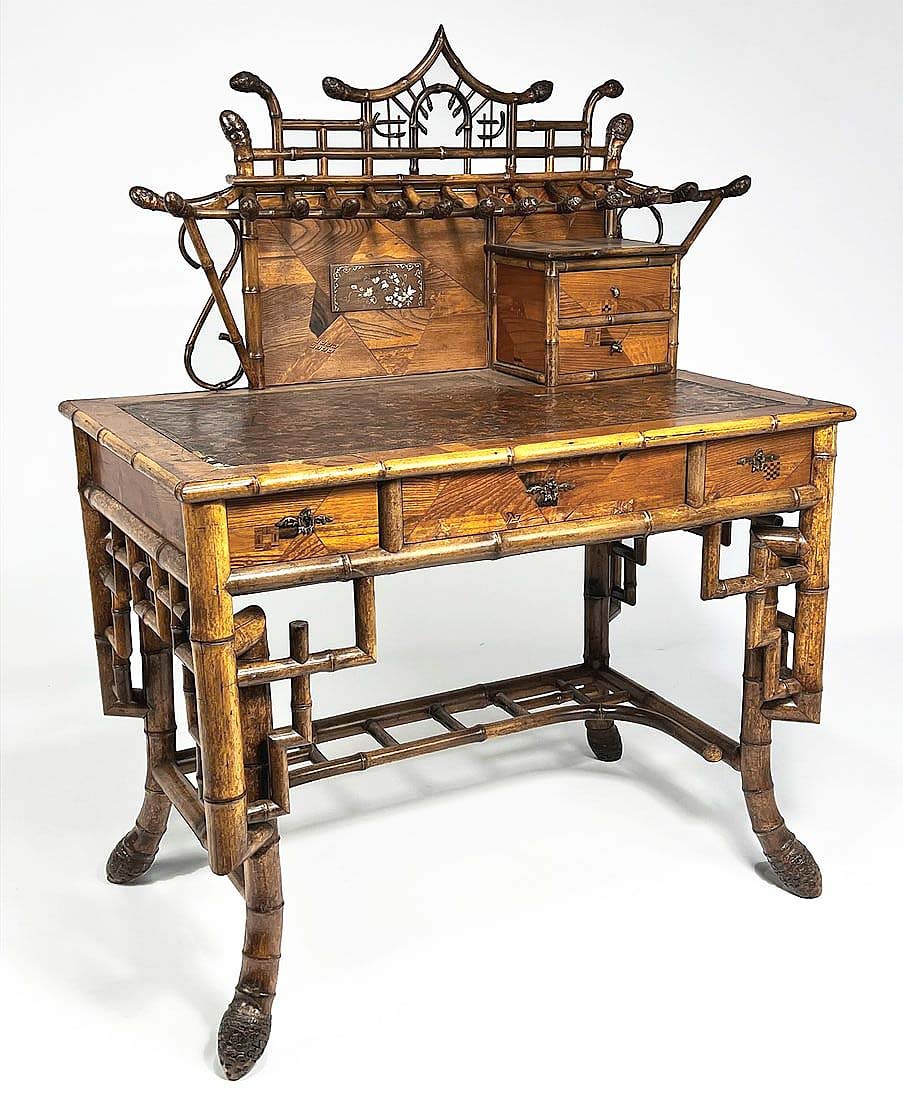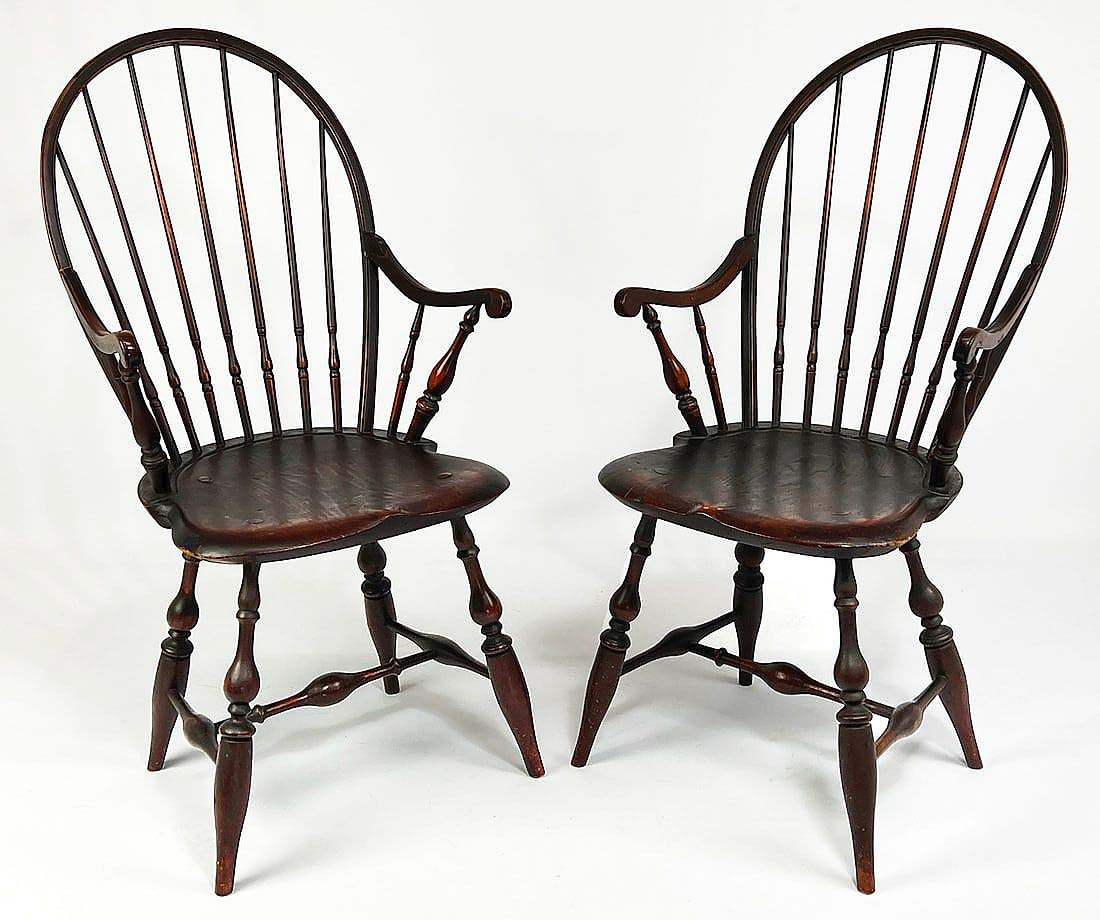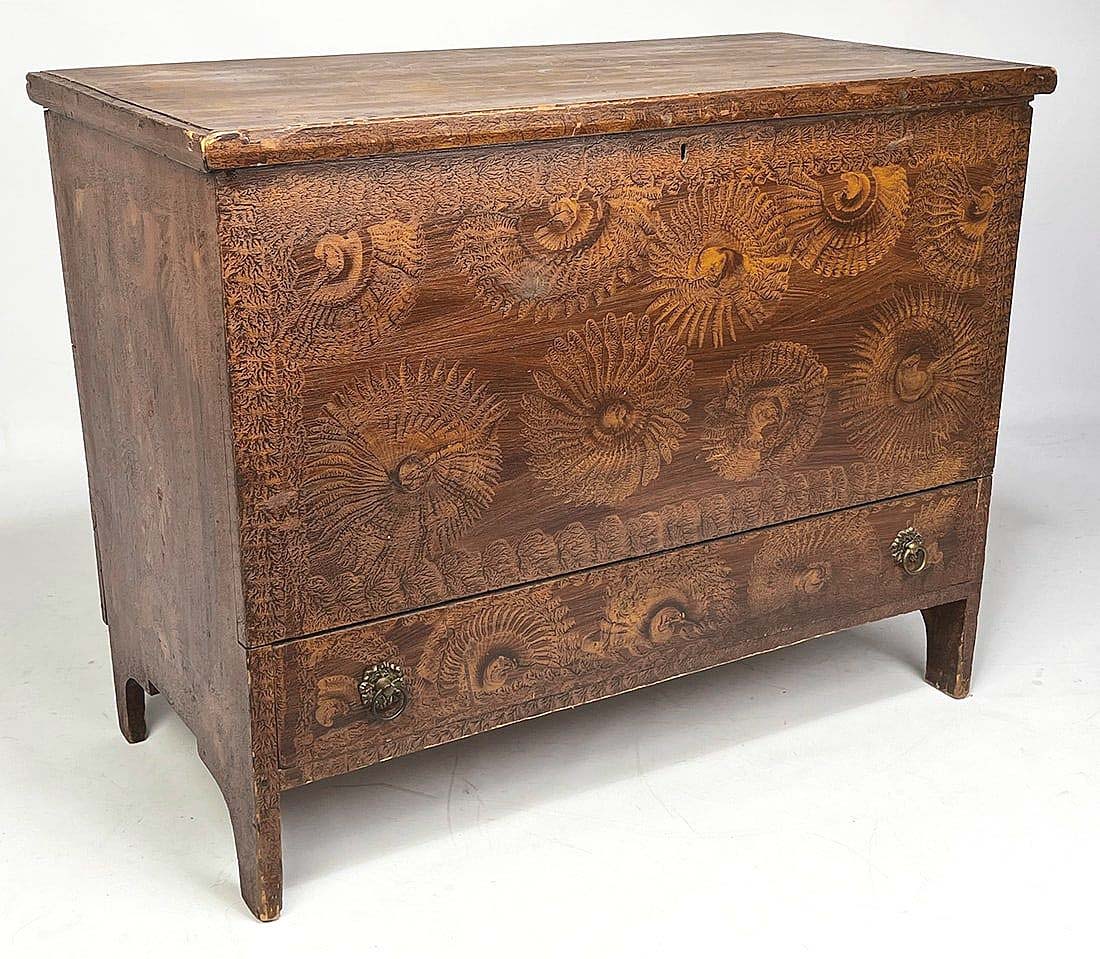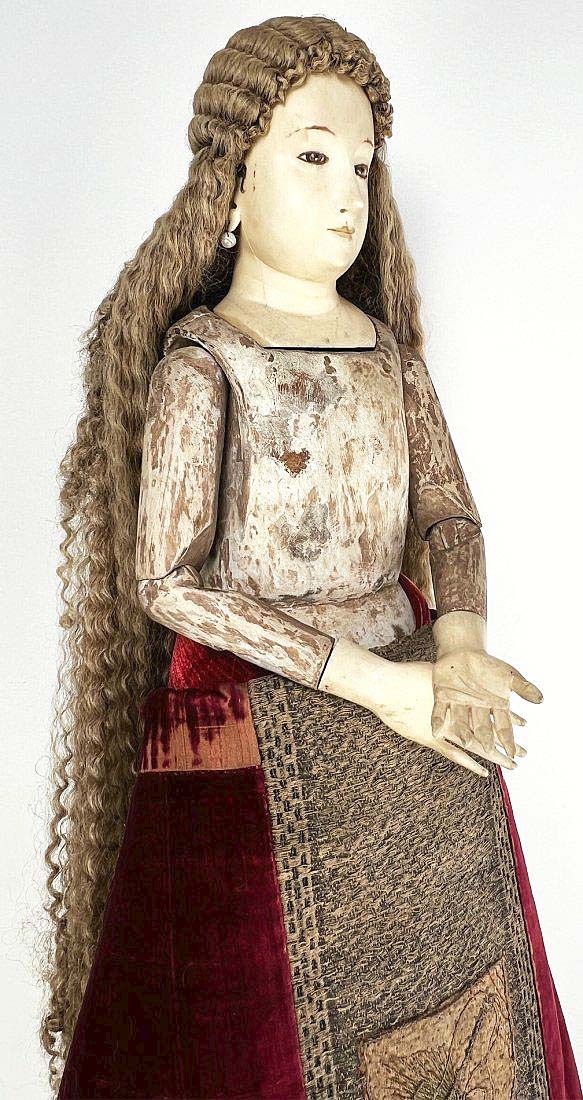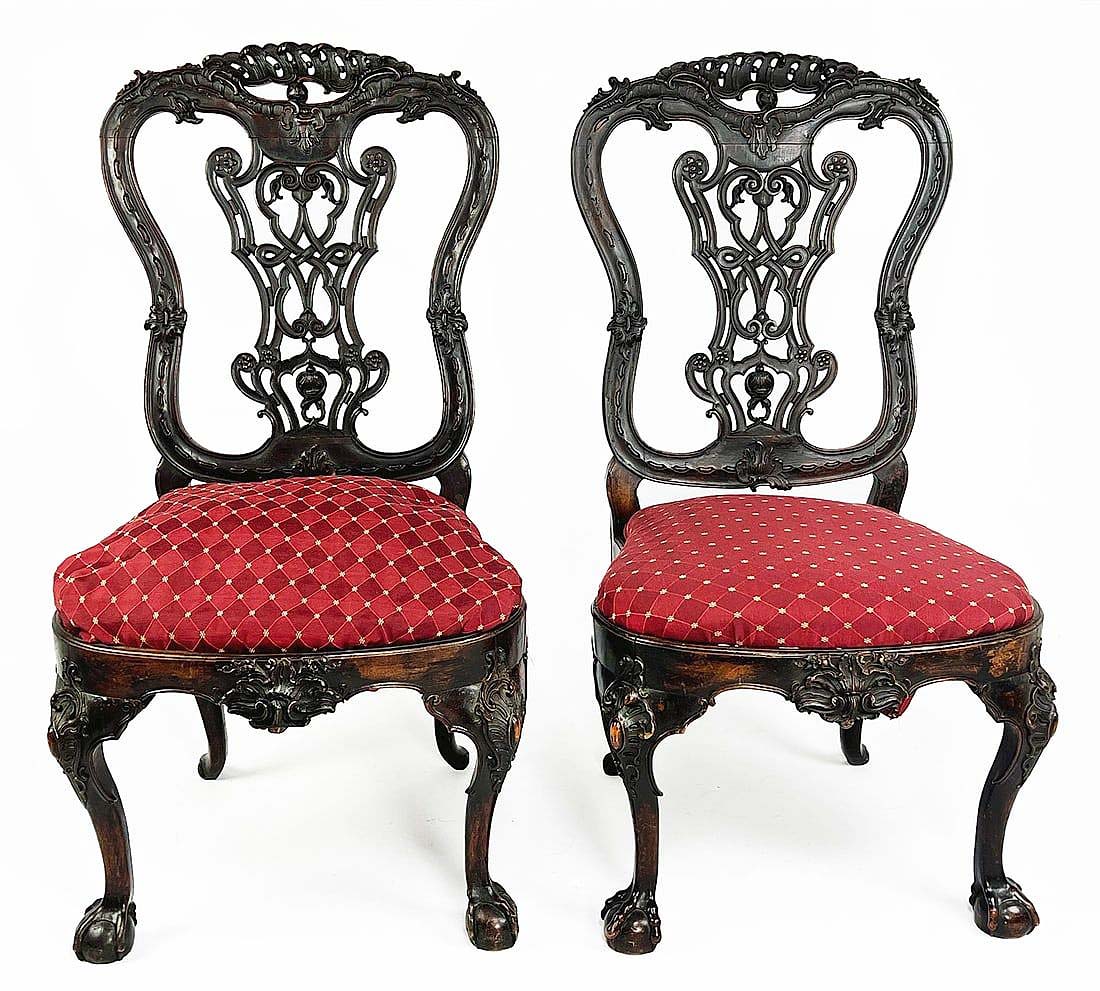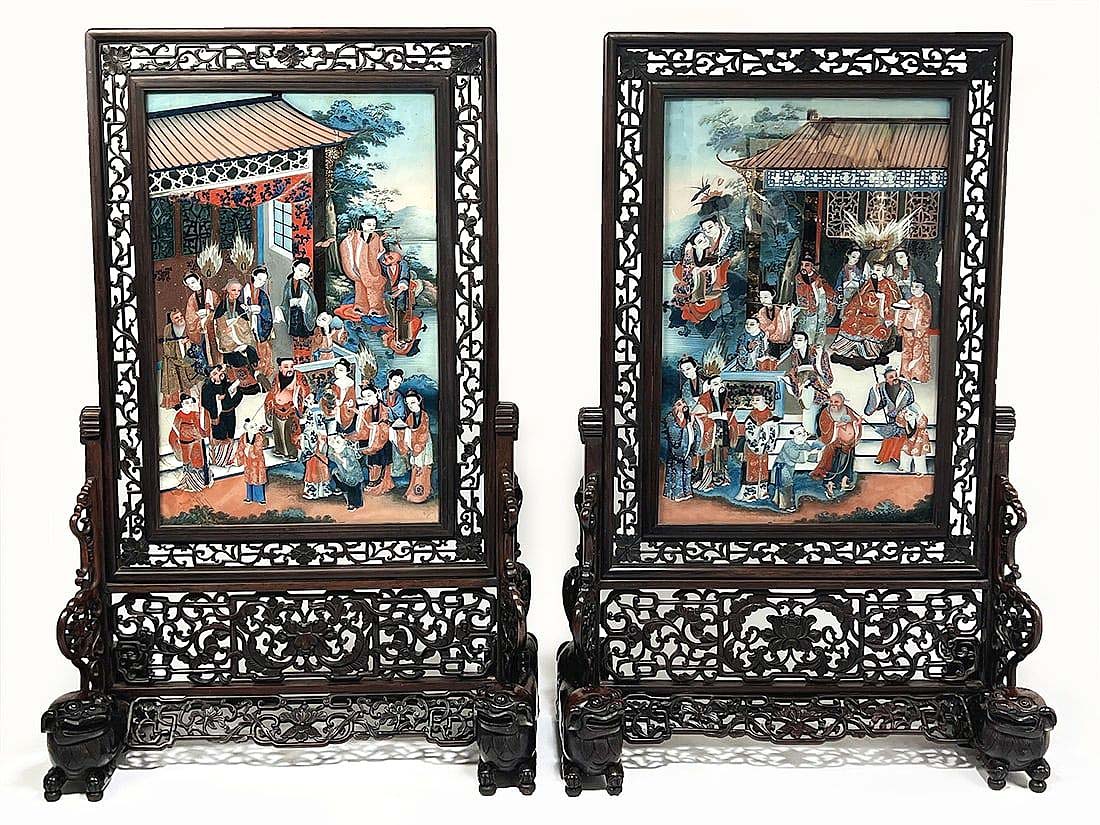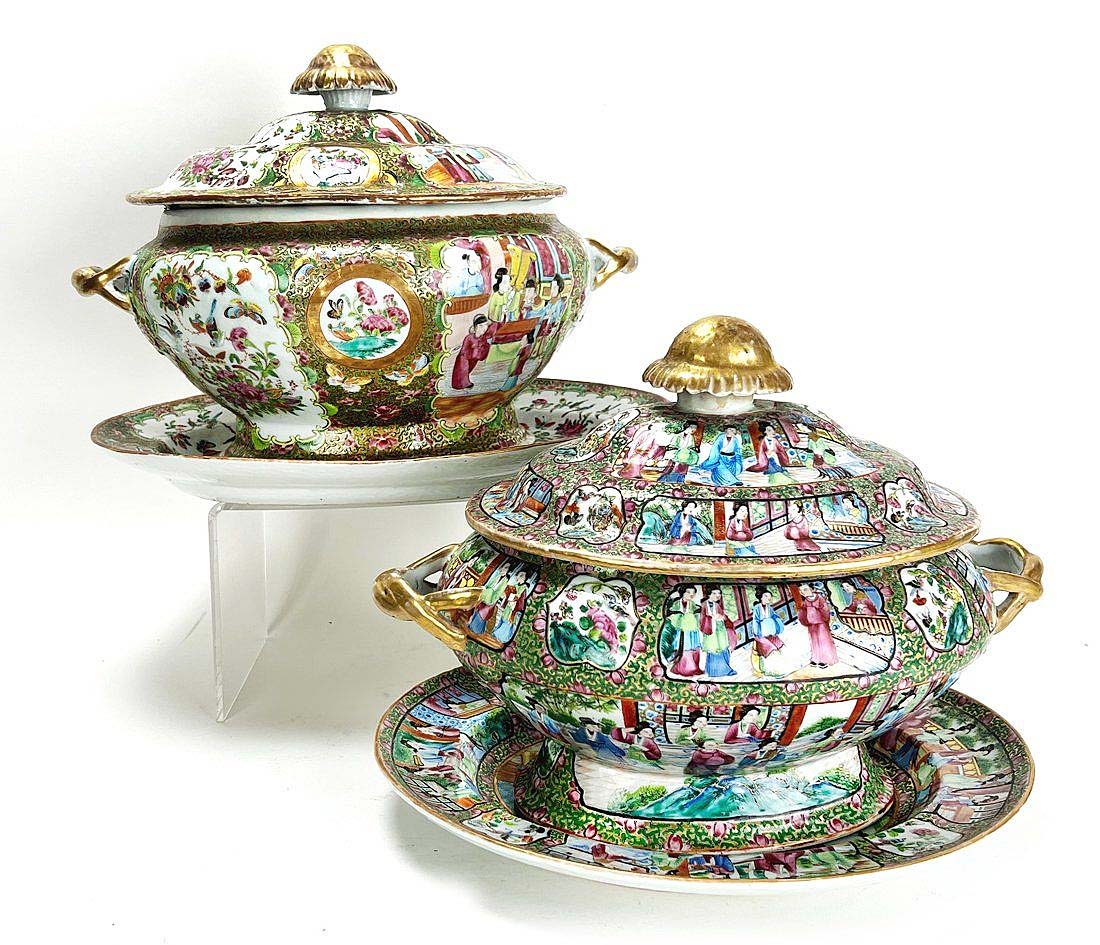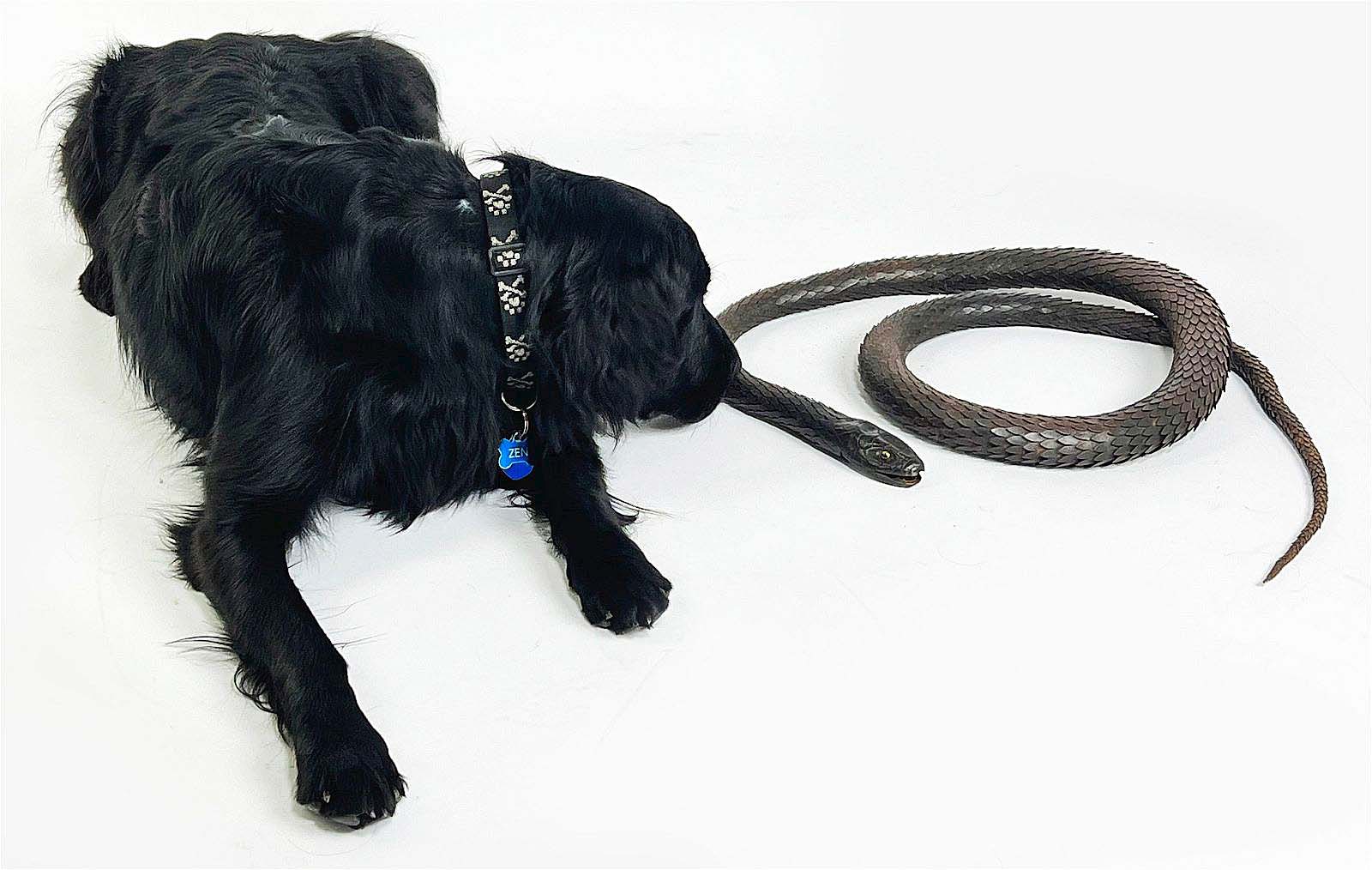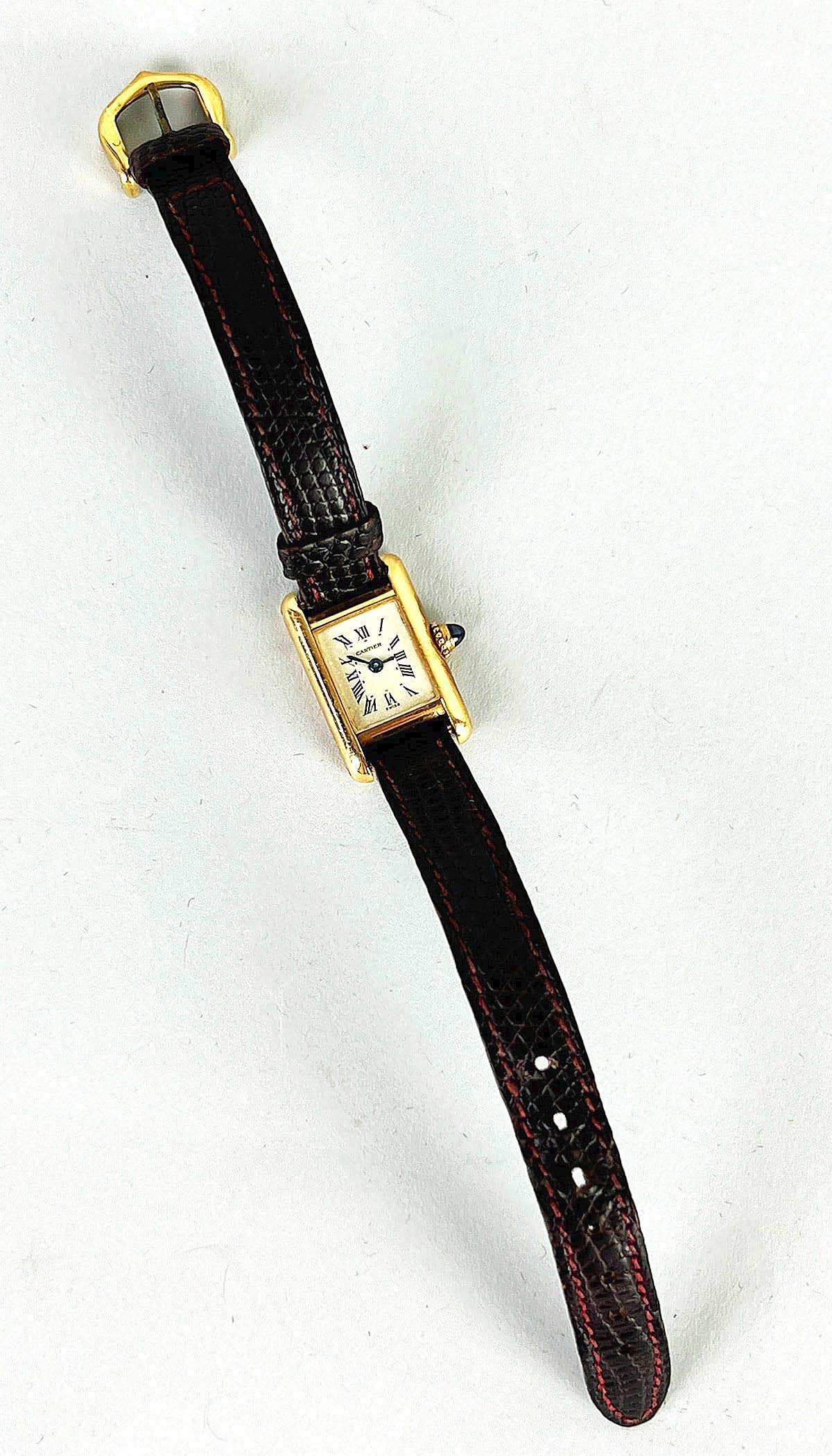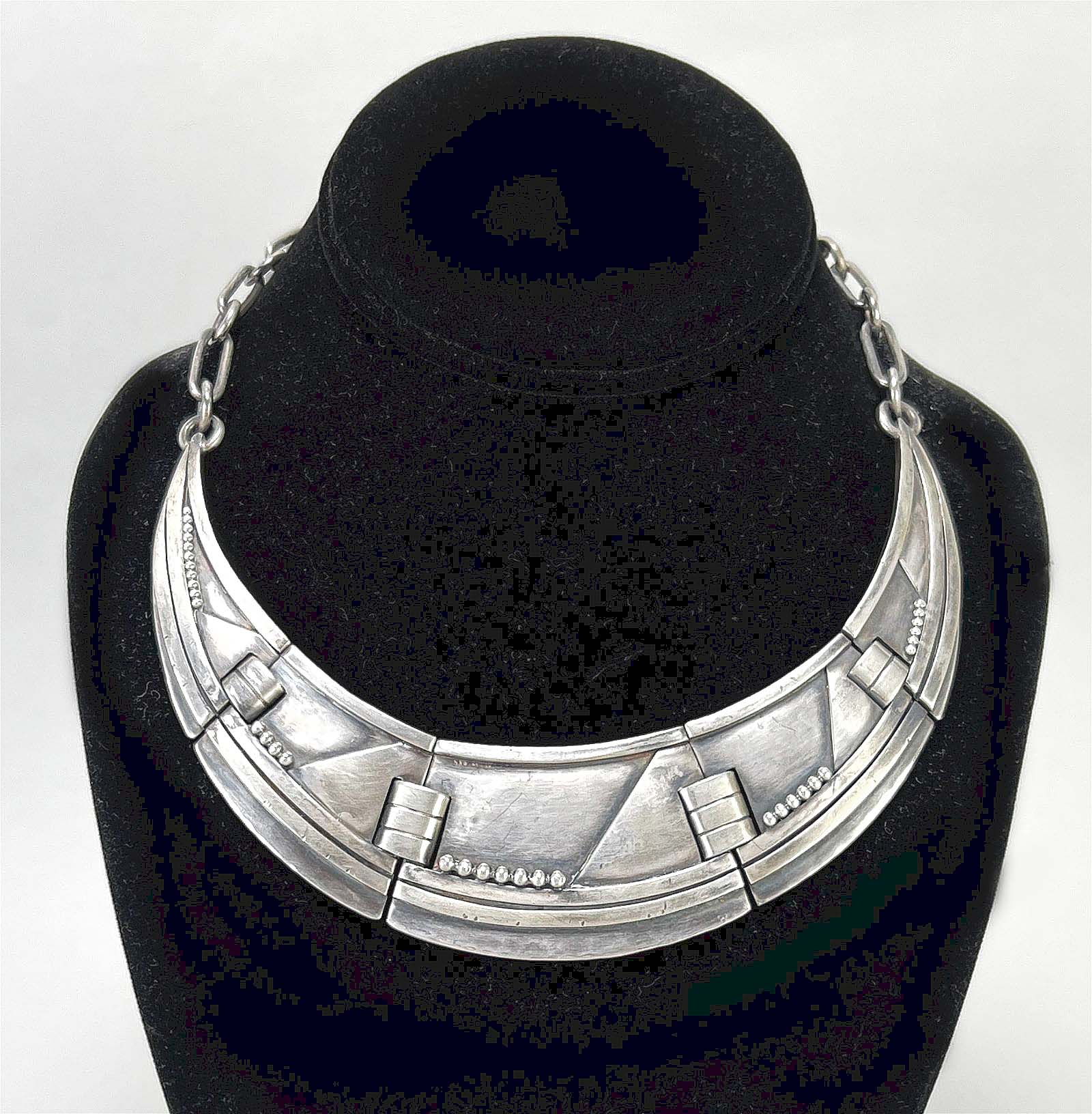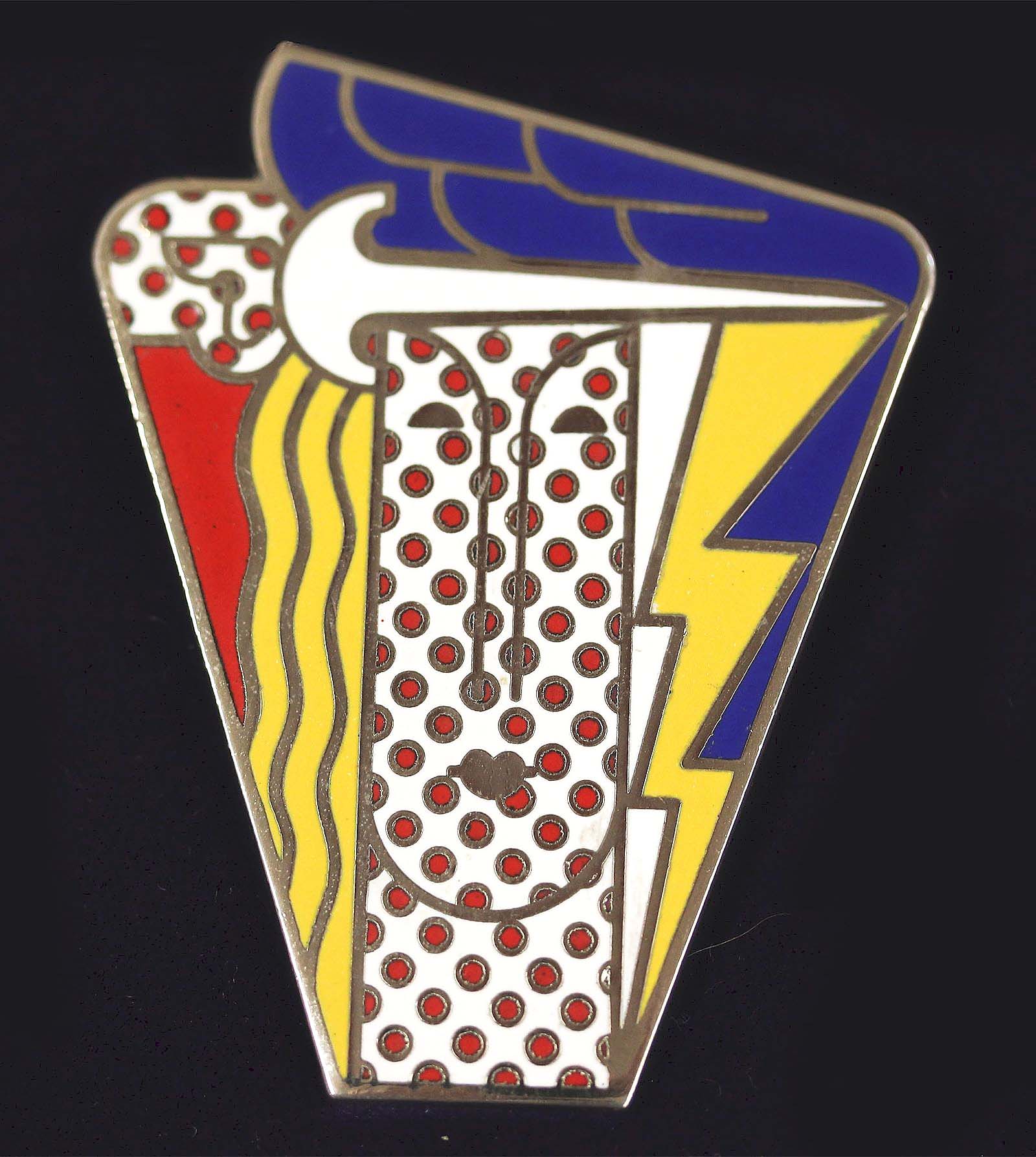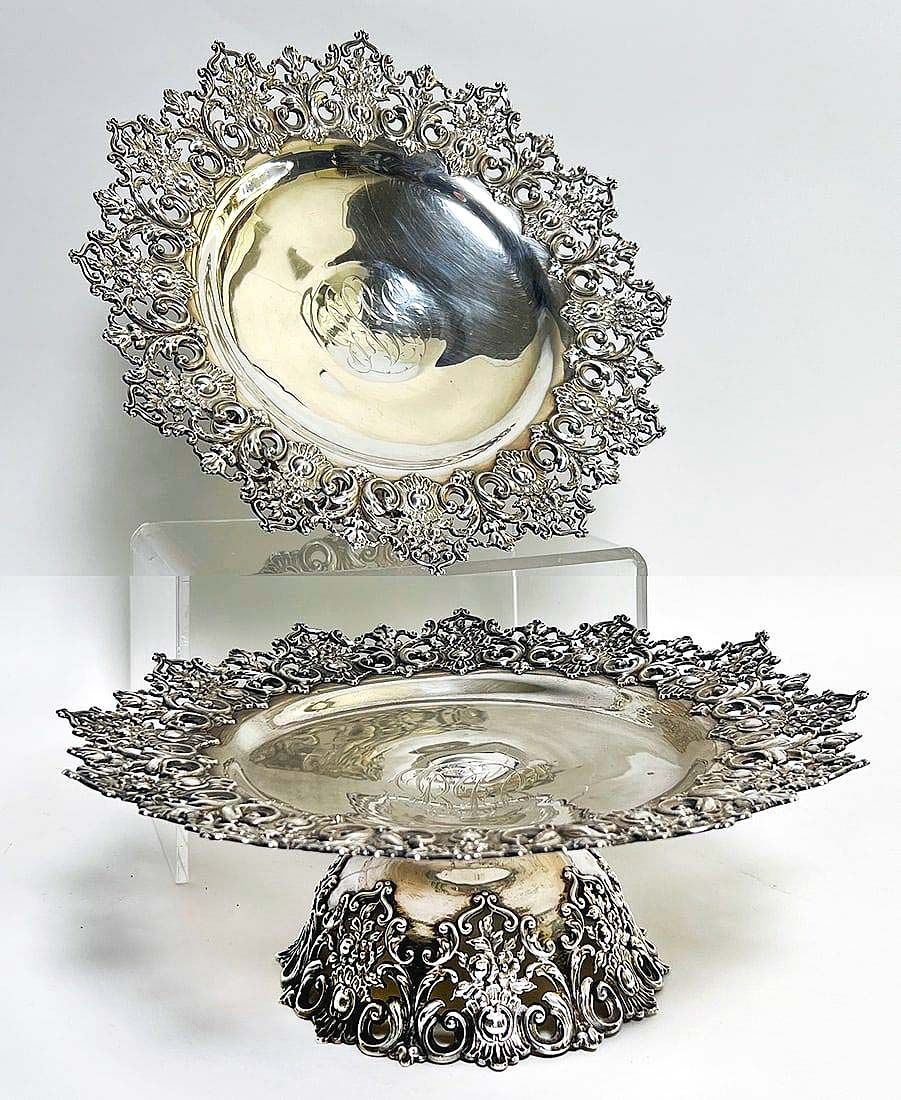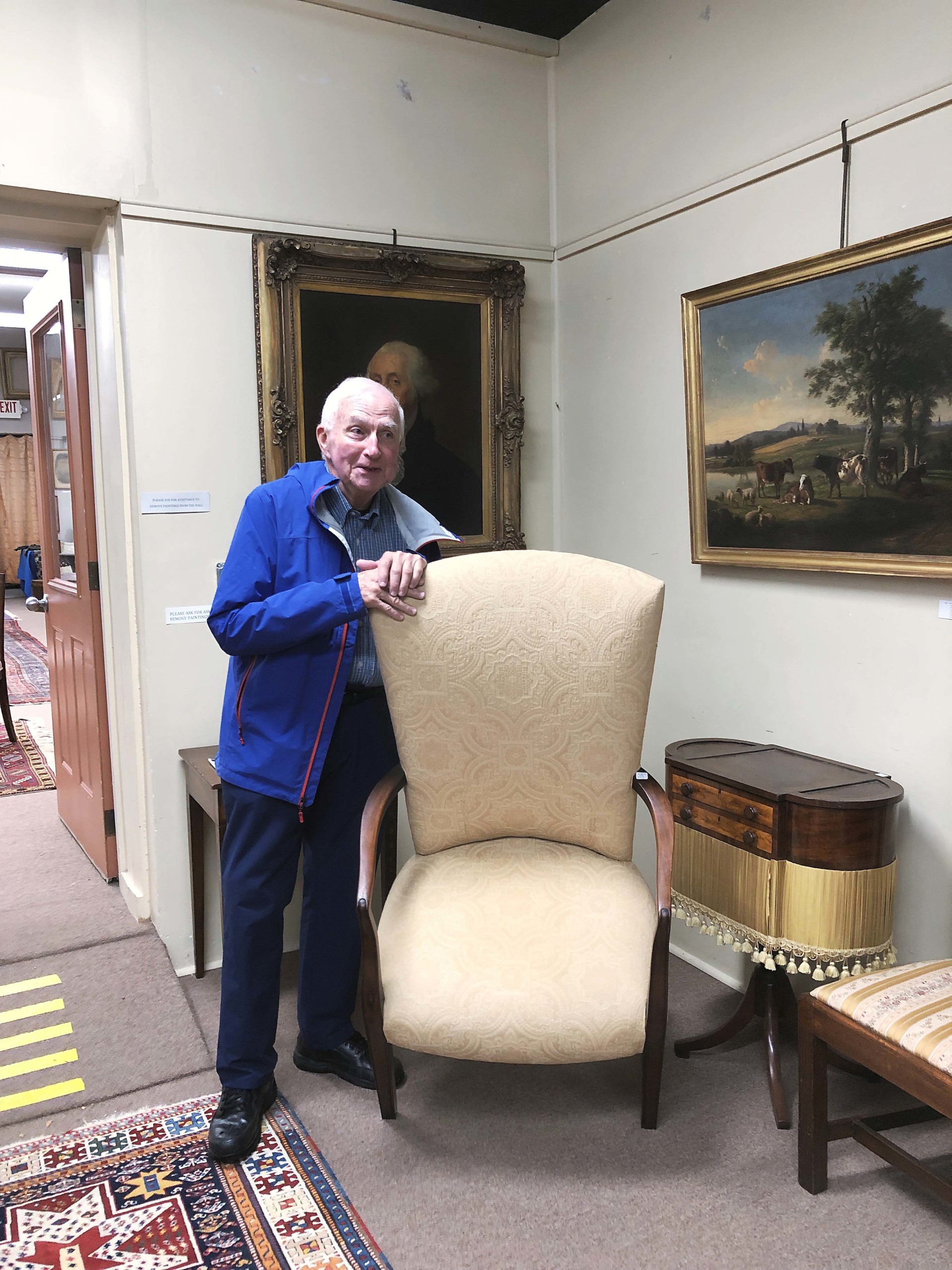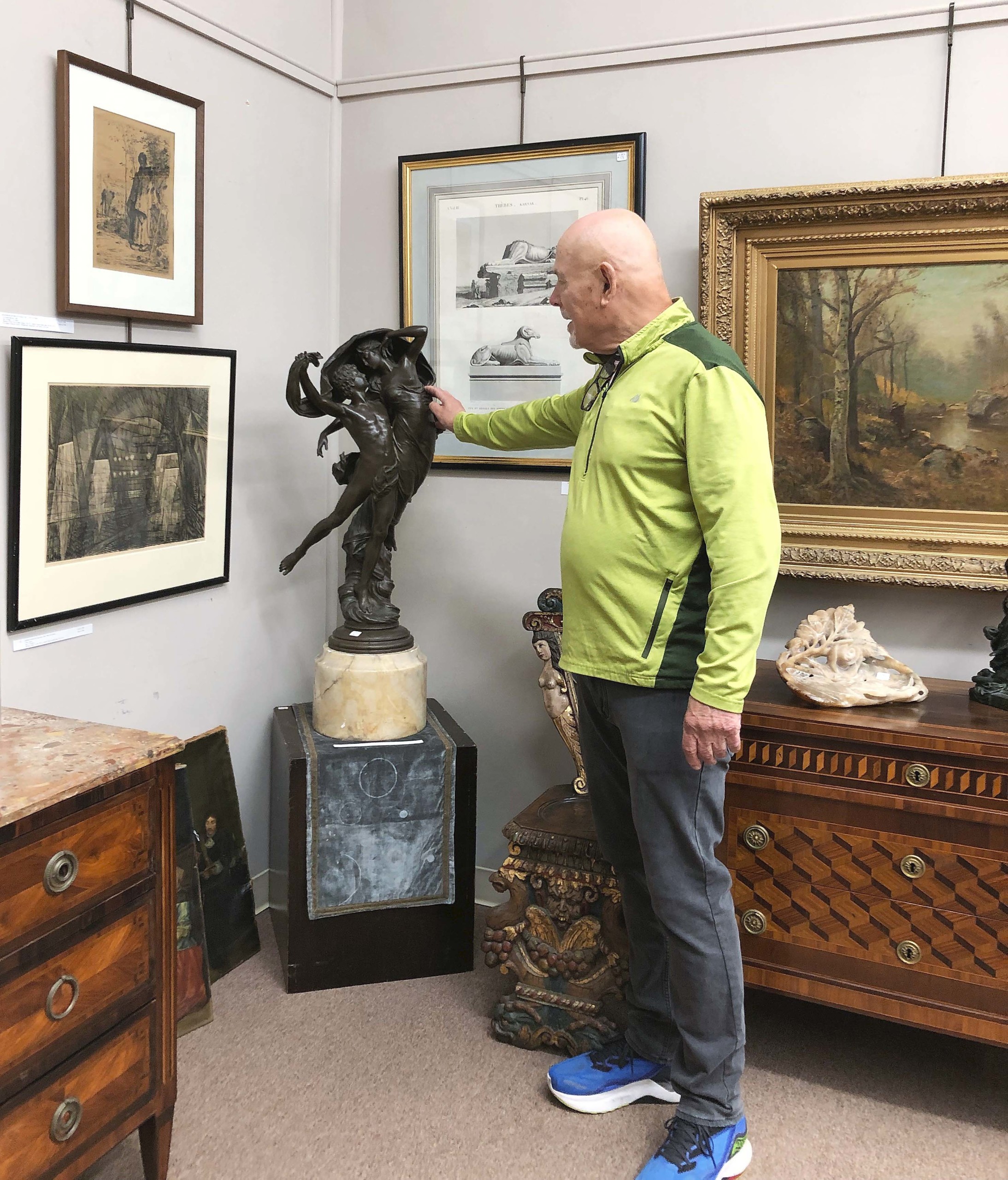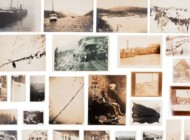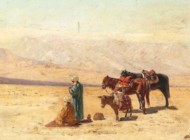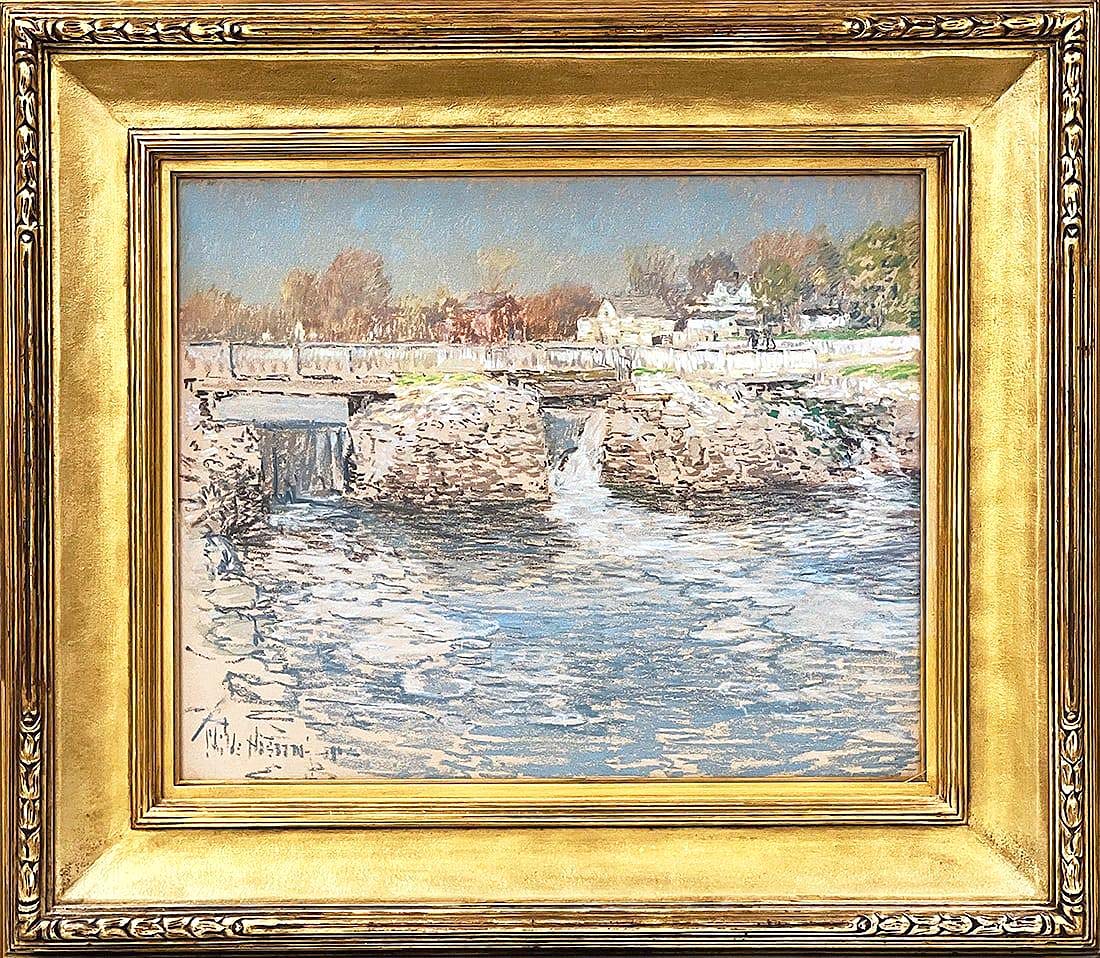
The star of the sale, as it was expected to be, was this pastel, “Tidal Dam and Bridge, Cos Cob, 1902”. It was signed and dated by Childe Hassam, who often painted scenes such as this. It’s a well-known painting, having been included in several major exhibitions, including a solo exhibition at the American Academy of Arts and Letters, NY in 1927. At that time, it was titled “The Tidal Dam and Bridges.” It sold for $45,140.
Review & Onsite Photos by Rick Russack; Photos Courtesy CRN Auction
CAMBRIDGE, MASS. — There were Turkish textiles. There was American furniture. There was silver. There were midcentury accessories. There were several European paintings, including one that earned the sale’s highest price. There were American paintings. There were bronzes, dolls, Louis Vuitton luggage, numerous Asian items, tea caddies, sailor valentines, Oriental carpets, jewelry and still more. In other words, there was something for almost everyone. CRN’s October 1 sale, simply advertised as a “Collections and Estates” auction, benefitted from bidding in the room, as well as internet, phone and absentee bids. As is typical these days, the in-house crowd was small. Also, as typical these days, good “brown” furniture was soft, while other categories were strong and the sale total finished at more than $700,000.
Expected to bring the sale’s highest price, which it did, $45,140, was an American Impressionist pastel by Childe Hassam (1859-1935) “Tidal Dam and Bridge, Cos Cob, 1902.” It was signed and dated. Hassam worked in New York City and was known for city scenes and coastal scenes such as this one. The painting will be included in an upcoming catalogue raisonné of Hassam’s work being prepared by Kathleen Burnside and Stuart Feld and is well-known to collectors, having been exhibited numerous times between 1927 and 2009. Some exhibition labels were on the reverse. Hassam’s works are in the collections of several museums, including the Museum of Modern Art and the National Gallery of Art. He was one of “The Ten,” a group formed in 1898 that included other American Impressionists such as Henry Twachtman and J. Alden Weir.
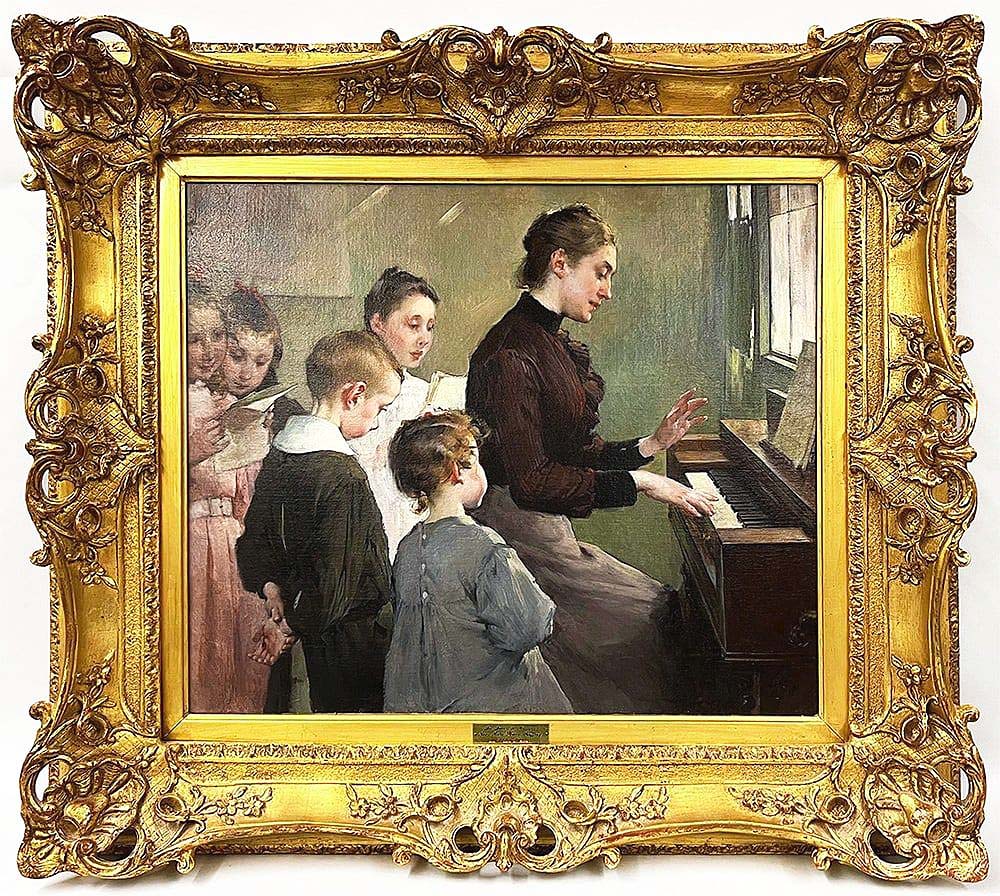
Henry Jean Jules Geoffroy was best known for subjects like this, peaceful scenes of children. It was dated1901 and sold for $14,640.
The selection of paintings included American and European works, with “Le Lecon de Musique” by French painter Henry Jean Jules Geoffroy (1853-1924) realizing $14,640, the second highest price of the painting offerings. The scene depicted children gathered around their teacher, who was playing a piano. It’s the type of scene the artist, who also illustrated children’s books, was known for. An unusual item by Paul Gauguin (1848-1903) was offered and did well. Although Gauguin is best known for his paintings, he also was a wood carver. CRN’s sale included a carved and painted spoon, more than 10 inches long, which sold for $15,860. It depicted a carved image of a fox and other images and is believed to have been done while Gauguin worked in Tahiti. Although unsigned, it is expected to be included in the catalog critique being prepared under the sponsorship of the Wildenstein Institute. Documents from Wildenstein were included with the spoon. A still life by John Frederick Peto (1854-1907) led the American works, earning $9,760. The oil on board showed a pipe, a book and a stoneware mug, and had an inscription on the back, “Painted by my father John F. Peto- Helen Peto Smiley.”
Carl Nordblom and his partner, Karin Phillips, generally start their sales with the paintings, as they did this time, and they included a selection of photographs. An untitled gelatin silver print by Diane Arbus (1923-1971) sold for $4,880. The scene depicted two handicapped patients at a New Jersey institution. It was stamped on the reverse “A Diane Arbus photograph 4/75 title Untitled (19) 1970-71 / print by Neil Selkirk/ (signature in ink) Diane Arbus. Not to be reproduced in any way without written permission from Diane Arbus.” Arbus met Selkirk in 1971, and the catalog notes: “Shortly after, Arbus committed suicide in July of 1971. Her estate requested Selkirk research and print her work for her 1972 posthumous retrospective at the Museum of Modern Art. He has since become the only person ever authorized to make posthumous prints of the photographs of Diane Arbus.” Arbus spent a long time trying to gain permission to photograph in institutions for the severely handicapped before finally gaining access in 1969. The best-known pictures from this series feature a group of patients from a New Jersey institution dressed in their Halloween masks. The project was titled “Untitled” by her daughter after her death.”
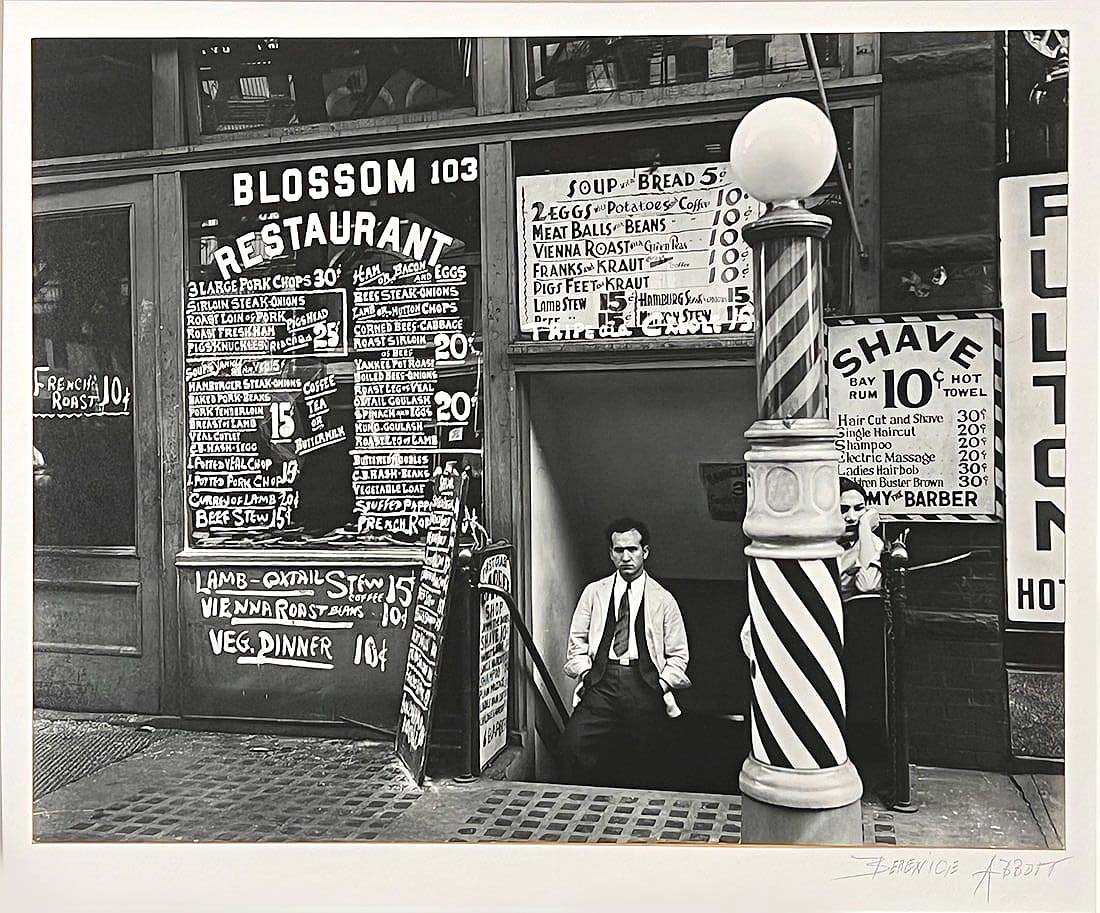
Funding for works in this series by Berenice Abbott was provided by the Works Progress Administration. This one, part of a series recording everyday scenes in New York city, was titled “Blossom Restaurant, 103 Bowery between Grand and Hester Streets, October 24, 1935.” It realized $2,562.
Another significant photograph was a signed 20-by-16-inch gelatin silver print by Berenice Abbott, “Blossom Restaurant, 103 Bowery between Grand and Hester Streets, October 24, 1935,” which earned $2,562. This photograph was one of a series Abbott did of New York City life, funded by the Works Progress Administration.
Unexpectedly bringing the second highest price of the day was a Japanese articulated iron snake. Made of more than 250 small, overlapping iron plates, the snake was more than 7 feet long and could be arranged in any position. The mouth could be opened or closed and it had painted eyes. Known as Jizai Okimono, it was cataloged as circa 1900 and realized $29,280, which was far above its estimate. It’s possible that bidders disagreed with the dating as Jizai okimono objects were first made in the mid-Edo period (1615-1868).
Furniture prices varied. European furniture was strong while there were some good buys to be had in American furniture. Pictured in Wallace Nutting’s Furniture Treasury/Mostly of American Origin, plate 304, and displayed with a copy of the book, was a mahogany Massachusetts blockfront chest on chest, circa 1770-80. It had a full bonnet top with urn and flame finials, which were cataloged as “apparently original” on its original bracket base. It earned $8,540, the highest price of the furniture selection. A New York or New Jersey Federal period tall case clock with a painted ship dial, which had descended in a Maine family, earned $4,575. It had a scrolled crest with brass finials and full, fluted columns. A pair of Newport Chippendale side chairs, possibly by John Goddard, brought $4,270. Certainly in the good buy category was a pair of Portsmouth Hepplewhite mahogany card tables, which went out for $2,806. They had an old finish, tapering legs, satinwood inlay and serpentine tops.
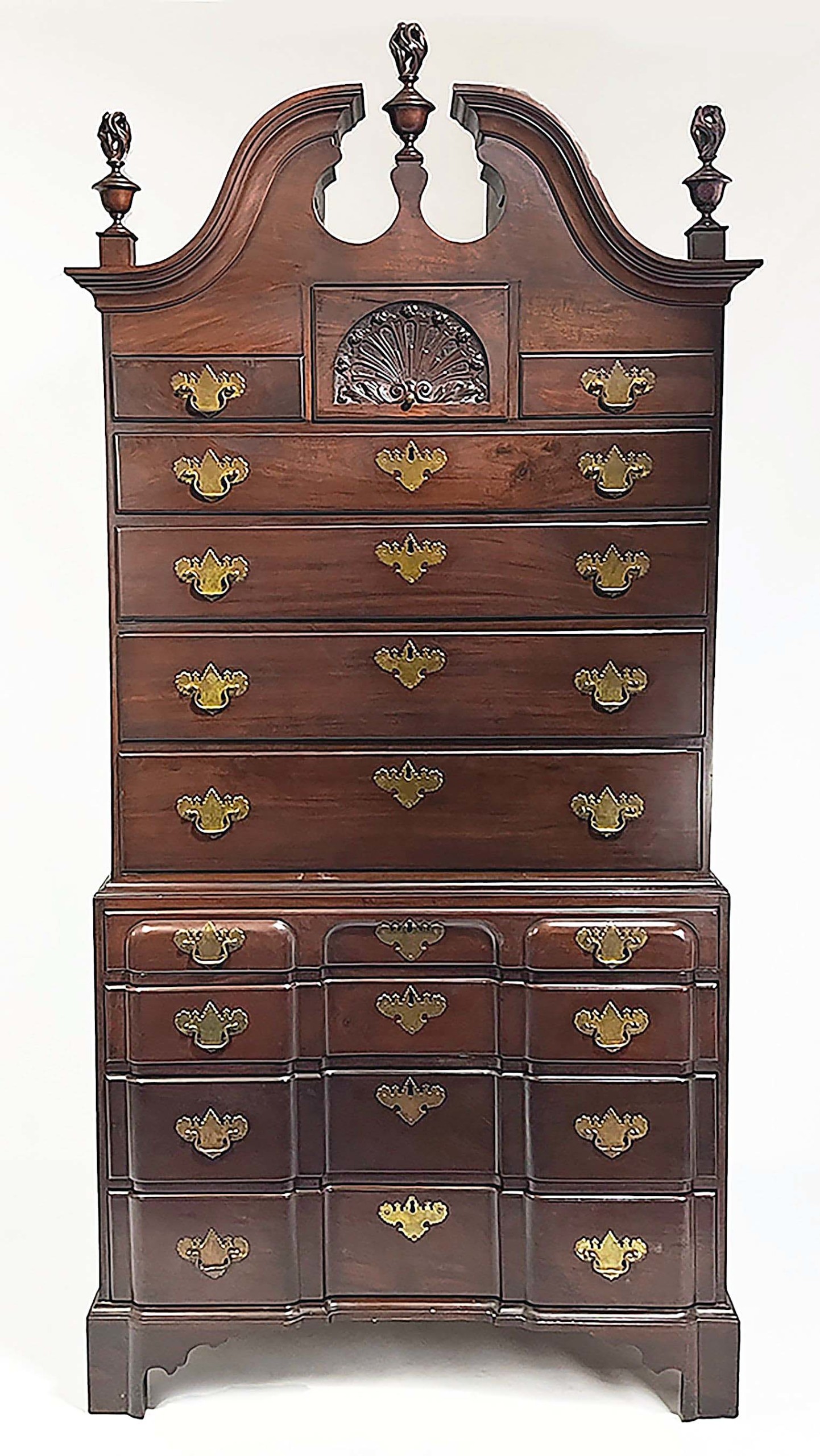
Pictured in Wallace Nutting’s Furniture Treasury/Mostly of American Origin, a mahogany Massachusetts blockfront chest-on-chest, circa 1770-1780, sold for $8,450.
European furniture, with which CRN does well, was led by a pair of Portuguese ornately carved Eighteenth Century side chairs, which earned $7,320. They had pierced and carved crests, ornately carved and pierced splats, with cabriole legs ending in ball and claw feet. A pair of Italian ornately carved, gilded and painted chairs called scabelli with mermaids and more sold for $3,965. A pair of Italian baroque walnut armchairs upholstered with Flemish tapestry panels earned $2,074.
There were a variety of other interesting items in the sale, including a collection of sailor valentines and a wide selection of jewelry. A silver collar necklace, circa 1940, made by Jean Despres, realized $5,185. Despres is best known for his Art Deco designs and attracted celebrity patrons such as Andy Warhol and Paul Signac. His work can be found in the permanent collections of many museums, including the Metropolitan Museum of Art, New York City. An enamel pin designed by Roy Lichtenstein, circa 1968, brought $2,440. It had the Roy Lichtenstein signature on the reverse and was from an edition of 250 made by David Lane, New York, and published by Multiples, Inc., New York. There were several more lots of jewelry. There were seven double sailor shell valentines. Each brought about the same price. Two sold for $2,196, one brought a little more, $2,318, and the others just a little less. Each was a Nineteenth Century example and each included differing messages of love and affection.
After the sale, Carl Nordblom remarked, “American furniture buyers missed some good bargains this time. Unusual items, like the Japanese snake, did really well. That was up to $20,000 before the sale started. The few midcentury items we had found new homes, and the market for the Louis Vuitton luggage remains strong. We’re putting together some good things for our next auction, which will be in a few months.”
Prices given include the buyer’s premium as stated by the auction house. For information, call www.crnauctions.com or 617-661-9582.

